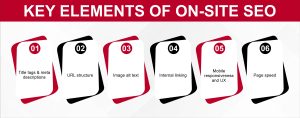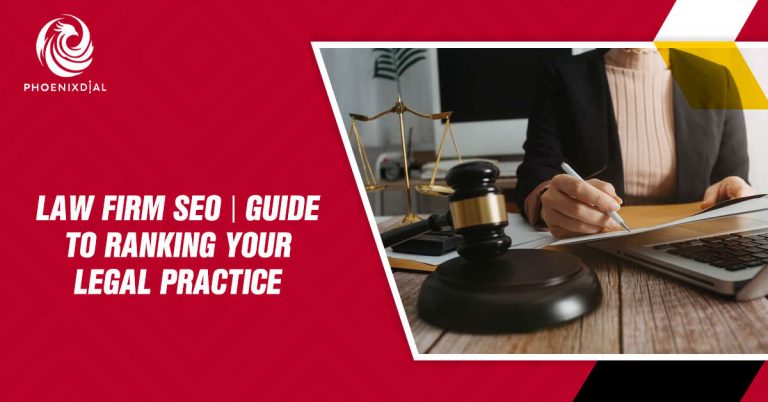More than 75% of people never scroll beyond the first page of search results. This is why businesses work hard to improve their SEOs. But many are still trying to detect the real difference between the on site SEO vs off-site SEO. They try some things – some keywords here, there is a backlink – but it doesn’t work. Their website does not rank, traffic remains low, and it does not generate leads.
Where Phoenix Dial stepped. With years of experience on hand in digital development, he helped a medium-sized company improve both onsite search adaptation and site strategies. They cleaned the website structure, customized pages, and created a strong backlink. Result? Better ranking, more clicks, and stable business growth.
Want to know how all this works – and how can you do it? The next sections break the major differences and best practices.
Start Growing Your Business Today
Get a free, personalized quote via WhatsApp for your business. No pressure—just smart solutions tailored to your goals.
What is Onsite SEO?
Onsite SEO (also called on-page SEO) means making direct changes to your website to help to understand the search engine better. The goal is to ensure that your site is easy to read for both Google and people. Good onsite optimization helps to make your pages look high when someone makes a discovery given by you.
Key Elements of On-Site SEO
Let’s look at the main parts of onsite search optimization that matter most.
Title Tags and Meta Descriptions
Optimizing title tags and meta descriptions is essential in on page seo examples. These tags communicate your page’s topic to search engines and influence click-through rates from search results.
URL Structure
A clear and descriptive URL structure helps users understand the content of the page and improves crawlability for search bots, an important aspect of onsite search optimization.
Image Alt Text
Adding appropriate image alt text serves dual purposes: improving accessibility and helping search engines index images, thereby contributing to onsite optimization.
Internal Linking
Effective internal linking improves site navigation, distributes link equity, and assists search engines in discovering relevant content within your website.
Mobile Responsiveness and UX
With mobile searches dominating today, mobile responsiveness and a smooth user experience (UX) are crucial for retaining visitors and satisfying search engine algorithms focused on usability.
Page Speed
Fast load times improve user satisfaction and reduce bounce rates, making page speed a vital factor in successful onsite optimization efforts.

Best Practices for On-Site SEO
To maximize the benefits of onsite SEO, it is recommended to ensure that all web pages have unique and descriptive title tags and meta details, maintain a logical URL hierarchy, and use naturally relevant keywords within the content. Auditing your site regularly for broken links and optimizing images for size and all characteristics will further strengthen your SEO efforts. Additionally, prioritizing mobile readiness and improving page speed creates a user-friendly environment that is in favor of the search engine.
What is Offsite SEO?
Offsite SEO means that you do everything outside your website so that it can improve the search engine rankings. While onsite adaptation focuses on your own pages, the work of the site helps in creating trust and authority. The more other websites and people talk about your site, the more Google considers it important.
Core Components of Off-Site SEO
Let’s look at the main parts of off-site SEO that help your website grow.
Backlink Building
The foundation of the offsite SEO is the backlink building, where other prestigious websites link to your content. High quality backlinks act as endorsements that promote the reliability of your site in the search engine’s eyes.
Social Media Signal
Social media engagement and shares contribute indirectly to SEO by increasing the visibility of your content and attracting more traffic, which can positively affect the search ranking.
Impressive Outreach
Cooperating with the affected to promote your brand or material helps generate valuable backlinks and increase your site’s reputation through reliable sources.
Brand Mentions
Mentions of your brand or website name on other sites—even without direct links—can strengthen your online presence and authority as part of a comprehensive off-site SEO strategy.
Guest Blogging
Writing articles for other websites in your industry not only earns backlinks but also expands your reach to new audiences, contributing to effective off-page SEO.
Best Practices for Off-Site SEO
Here are some simple suggestions to improve your off-site SEO:
- Create links from high-quality websites
- Share your content on social media
- Connect with influencers in your field
- For your brand mentions and reach them to convert them into links
- Write guest posts on reliable blogs in your industry
When the page is used with a strong SEO service, your off-site SEO helps to complete the photo. Hey, have you ever wondered how some websites just seem to get all the traffic? Let’s figure out the difference between onsite and offsite SEO together—it’s easier than you think!
What is the Difference Between Onsite and Offsite SEO?
It is important to understand the difference between onsite SEO and off-site SEO to develop a comprehensive digital marketing strategy. Each approach has its own unique focus and methods, which can significantly affect the performance of your website in the search engine rankings.
Focus
On-site SEO mainly focuses on customizing elements within its own website, such as materials, HTML tags, and site structure. In contrast, the off-site SEO emphasizes the rights and reputation of its site through external factors such as backlinks and social media engagement.
Control
With the onsite SEO, there is direct control over the changes you have, which allows for immediate adjustment and adaptation. However, offsome SEO depends on external sources, making it less approximate and hard to control, as it depends on other websites and platforms.
Used Technology
Techniques for onsite SEO include optimization of title tag, improving page speed and increasing user experience. On the other hand, off site SEO techniques include backlink building, social media marketing and influencer outreach to increase your site’s visibility and rights.
Speed of Results
On-site SEO changes can achieve quick results, often visible within weeks, as the search engines again crawl and index your site. Conversely, off-site SEO efforts may take longer to show results, as building authority and trust through external sources is a gradual process.
Matrix to Measure Success
Success in onsite SEO can be measured through a matrix such as organic traffic, bounce rate, and keyword ranking. For off-site SEOs, metrics such as many backlinks, social media shares, and brand mentions are important indicators of effectiveness.
Which One is More Important?
The online debate can be sounded off about whether onsite SEO or offsite SEO is more important. The truth is, both are component strategies for a successful SEO campaign. On-site SEO sets the stage for your site, ensuring it is properly adapted to the search engine and provides a good user experience. Onsite SEO has elements which include onsite search adaptability, page speed, and mobile accountability, and are crucial to retain visitors and improve ranking.
In contrast, off-page SEO is important for establishing your website’s authority and trust. By building backlinks and engaging on social media, you are building your reputation and building trust with search engines, which is an important factor in reaching the top of the list in search results. A strong off-site can struggle to become visible, even the best of our on-page, without visibility and reputation.
Finally, the most effective approach is to integrate both onsite and offsite SEO strategies. By doing this, you can make a well -rounded SEO plan that not only improves the performance of your website, but also enhances its rights in the digital landscape. Balancing these two aspects will lead to permanent growth and will give better overall results in the search engine rankings.
How to Optimize Your Website with Both On-Site and Off-Site SEO?
To get the best results in the search rankings, you need to combine the site SEO and off-site SEO. They act like a team. One builds your site from inside, the other promotes it from outside.
Start with your onsite SEO. Ensure that each page is easy to read, loads rapidly, and contains clear keywords. Use strong title tags and meta details so that the search engine learns what each page is. Add useful images with the Alt text, link between the pages, and make sure your site looks good on the phone. All these pages are SEO examples that help you rank better.
Next, focus on the off-site SEO. Start building backlinks from trusted websites. Share your blog posts on social media and connect with the affected people who can share your content. You can also write guest posts on other websites in your industry. These actions create your online reputation, even if they are out of the site.
Conclusion
So, now you know the significant difference between on-site SEO vs off-site SEO and why. If you want to develop the traffic of your website smartly, it is best to work on both.
Phoenix Dial has experts to help businesses do so. They provide top-notch on-page SEO service and strong off-site strategies to see your site online.
Ready to take your website to the next level? Contact us and start growing your SEO today!
FAQ’s
What is the difference between onsite and offsite SEO?
On-site SEO happens on your website, like fixing content or structure. Offsite SEO happens elsewhere, like backlinks and shares. Both help your site rank higher, but in different ways.
Are “onsite” and “on-site” SEO the same thing?
Yes, they mean the same thing. Some people write onsite, others say on-site. Both refer to SEO work done on your website.
Can I just do onsite SEO and skip the rest?
You can start with onsite optimization, but for long-term results, you’ll need offsite SEO too. They work best together, like a team.
What are some on-page SEO examples?
Some easy ones are using headings, adding meta descriptions, using keywords the right way, linking to other pages on your site, and making sure your site loads fast.




